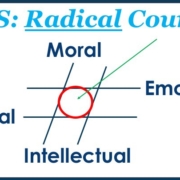Xenophon shows how to improve employee performance
Do you have inconsistent employee performance? Like most leaders, you have stellar performers, average ones, and some employees who don’t seem to get it.
The question is where to put your emphasis. Do you focus on getting below-average performers up to snuff, praising your top talent, or boosting the average?
It’s a timeless question that’s vexed leaders throughout history. The ancient Greek philosopher, military leader, and entrepreneur Xenophon discusses the challenge in his book Anabasis, or Retreat of the Ten Thousand.
After their military expedition to Persia failed, the leaderless Greeks needed to get home. First, they chose a Spartan who treated people severely to gain compliance. Leading by fear created a revolt in the ranks.
The next commander took the opposite approach, wanting to be loved. He heaped praise on good performance and believed that withholding praise was sufficient for people to self-correct. The army fell into chaos.
The army asked Xenophon to take over. He began by exemplifying the standards he expected of everyone and explaining the “why” behind them. He led primarily by persuasion, gaining the army’s buy-in.
He praised excellent performance because he recognized that positive reinforcement was the best way to show people what right looked like. He corrected subpar work and indiscipline while showing people how to do it better next time.
The expedition returned home intact, eluding a larger enemy force for over a thousand miles.
Xenophon shows that buy-in makes accountability easier. When people are clear on the standards and expectations and accept the rationale behind them, they are more likely to follow them voluntarily because they believe that they are better off by doing the right thing.
- Make your standards clear using the” X so that Y” formula: X is your value or expectation, and Y is your desired results or outcomes.
- Co-create these standards with your employees because buy-in improves accountability.
- Walk the talk. You have to model the standards or no one will take them seriously.
- Use positive reinforcement to illustrate what right looks like. People can more easily replicate what they’ve seen or done.
- Correct sub-par performance by focusing on “how to do it better next time” instead of just fixating on what went wrong.
This approach sets the foundation for “disciplined initiative,” where people do what’s right without micromanagement and innovate for the common good.
To read more about Xenophon and disciplined initiative, see my chapter “Discipline: Creating the Foundation for an Initiative-Based Organization” in Leadership: The Warrior’s Art.
How’s this approach working for you? Email me to let me know.










